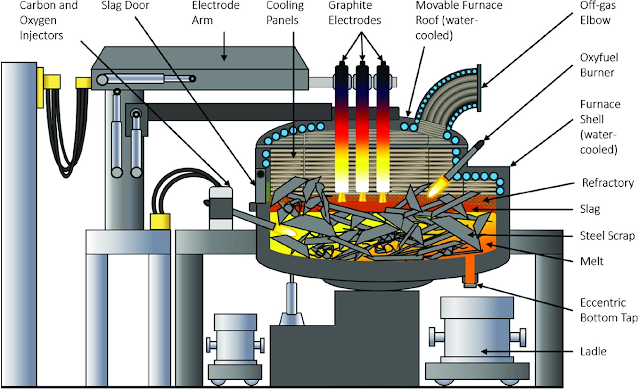The Role of Silicon Barium Calcium Inoculant
(Summary description)Silicon Barium inoculant is mainly used in the production of gray cast iron and ductile iron. Nodular cast iron can significantly increase the number of graphite balls, and used in gray cast iron can reduce the tendency of white mouth. Refine grains and improve graphite morphology. In addition to obtaining higher mechanical properties, these inoculants also have a strong anti-decay ability. Generally, the inoculants contain Ba between 2% and 3%.
Various Inoculant Effects and Methods of Use
Foreign name: Inoculant
Si: 68-80%
AL: 0.5--1.5
Ba:2--6
Chinese Name: inoculant metallurgical refractory
What is Silicon Barium Calcium Inoculant?
It can promote graphitization, reduce the tendency of white mouth, improve the shape and distribution of graphite, increase the number of eutectic clusters, and refine the matrix structure. It can be used for a short period after incubation (
About 5-8 minutes) has a good effect. It is mainly suitable for general conditions of various situations or instant incubation in the later stage.
Main ingredients Metallurgical Refractories
Si: 68-80%, AL: 0.5-1.5 and trace amounts of Ca, Al, Mn, etc.
Instructions
1. Pour ladle inoculation: add the inoculant to the ladle, then flush the molten iron to melt it evenly, and then pour.
2. The added amount is about 0.2-0.4% of the weight of the molten iron.
Detailed Classification Metallurgical Refractories
(1) Ferrosilicon inoculant. Ferrosilicon inoculants are divided into three types: 45FeSi, 75FeSi, and 85FeSi.
The treatment effect of 45FeSi inoculant is poor, and the cost of 85FeSi is higher. 75FeSi is commonly used. The Ca and Al in 75FeSgreatly influence on the inoculation effect. Among them, Ca has the greatest influence, and it has a strong inking ability when it is greater than 0.5%. Generally, 75FeSi selects the following chemical composition range, Si: 74%~78%; Ca: 0.5%~1.0%; Al: 0.8%~1.5%.
(2) Silicon barium inoculant. Silicon Barium inoculant is mainly used in the production of gray cast iron and ductile iron. Used in nodular cast iron can significantly increase the number of graphite balls, and used in gray cast iron can reduce the tendency of white mouth. Refine grains and improve graphite morphology. In addition to obtaining higher mechanical properties, these inoculants also have a strong anti-decay ability. Generally, the inoculants contain Ba between 2% and 3%.
(3) Si-C inoculant. This type of inoculant is mainly an ink-forming inoculant. Its main advantages are low dosage and strong inking ability, but it is difficult to dissolve. For example, Si-C-Ca-Al has a good effect on preventing the whitening of thin-walled castings and is suitable for cupola hot metal use. Si-C-Al has a better softening effect and is used to improve cutting performance.
(4) Rare earth inoculants. Rare earth elements are an important component of high-efficiency and long-acting inoculants for cast iron. my country is extremely rich in rare earth resources. The research and application of this type of inoculant are of more practical significance. Generally speaking, this kind of inoculant has duality, and the rare earth residue in the inoculant cast iron has a certain range (RE is 0.3%~0.06%). When the carbon equivalent is low, the amount of rare earth added is small, and when the carbon equivalent is high, the amount of rare earth added is slightly larger. In addition, rare earth elements are also compounded with alloy elements such as Mn and Cu to improve the structure of cast iron and increase its mechanical strength.
(5) Silicon calcium inoculant. Silicon-calcium inoculant is a kind of ink inoculant used earlier, and low-calcium inoculant is often used now. It is more suitable for the production of low carbon equivalent cast iron, which can eliminate white mouths and increase strength.
(6) Stabilizing inoculants. The stabilized inoculant is a composite of inking elements and stabilizing elements. It can effectively promote graphitization while inhibiting the decomposition of cementite. It is more suitable for the production of higher carbon equivalent cast iron. Common rare earth stabilized inoculants, Nitrogen stabilized inoculants.
(7) Compound inoculant. The compound inoculant is a type of inoculant composed of the inking element and the element that hinders the growth of the eutectic cluster. It plays a role in nucleation and growth, so it has attracted more and more attention in the production of cast iron. Used with Bi-containing compound inoculant for ductile iron and CMSB compound inoculant for gray cast iron.
Hani Tech is the one-stop supplier able to design, manufacture, install and commission your melt shop and hot rolling mill plant from A to Z.
Free send inquiries to stella@hanrm.com or inquiry99@hanmetallurgy.com if any needs.
Email: stella@hanrm.com Or stellarollingmill@gmail.com inquiry99@hanmetallurgy.com
Whatsapp/Wechat:+8615877652925
Website: https://www.hanmetallurgy.com/
https://www.hanrm.com











.jpg)







